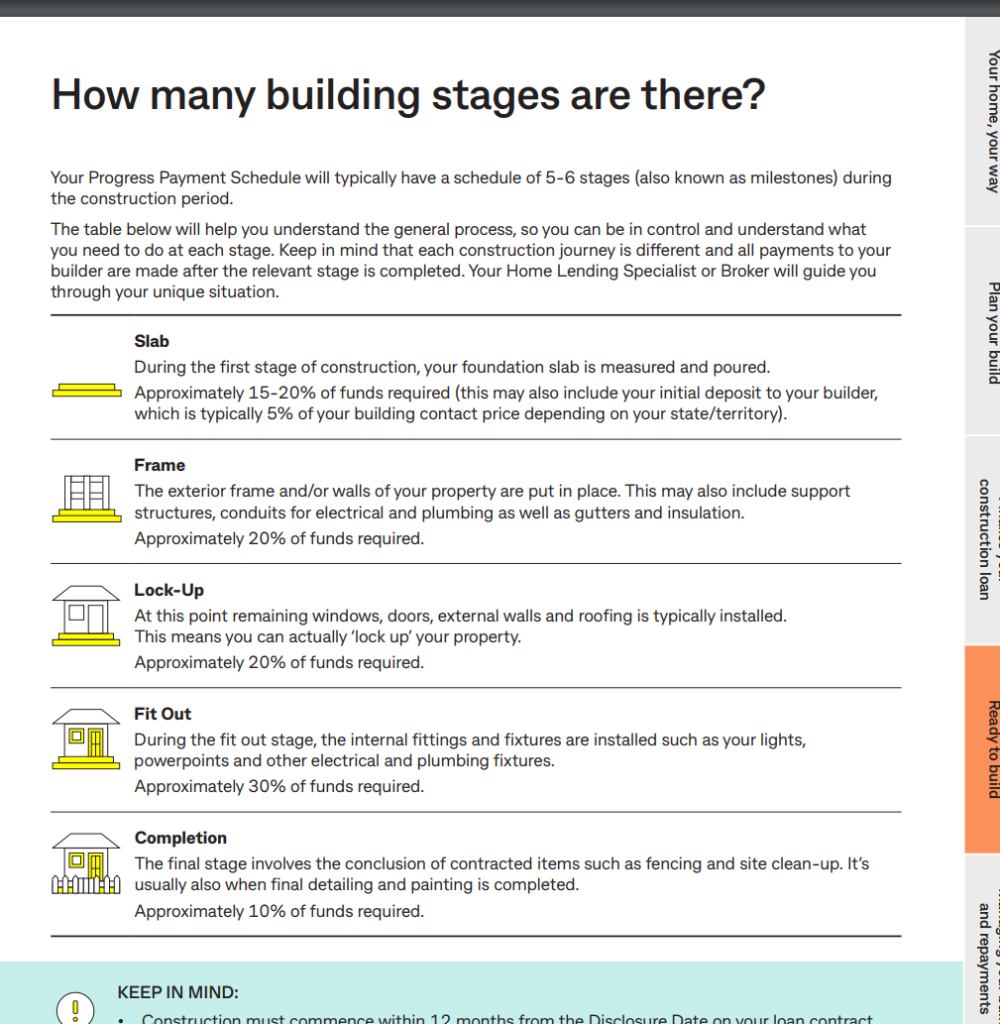Home Building Terms
Just like how we refuse to pay for spotify (we’ve mastered the art of skipping the ads), we’re not super keen on all the big, heavy building lingo. Srsly, nooooo one has time to be confused with long, confusing words.
Soooo the FHOC crew decided to put together a nifty mini guide with all the finance, land and construction terms you might hear along your homebuilding journey – explained in ways that make them super duper simple to understand. No baffling or complicated lingo to be found here, folks!
Building approval
- Before we can build your home
- Commence construction
- Need to seek relevant approvals from different parties
- Applies to every home we build
- Plans sent to local council, so recieve your building permit
- Ensures your new home is compliant with building codes of Australia and other required standards

Planning approval
- Approval depends on how the home sits on your block of land
- Also known as development approval
- Assess the proposed use, activity or development of land or property
- So if you want to build a new home or make a big change to a pre-existing building, you’ll need planning approval
- Your New Homes Consultant will be able to advise if planning approval is required, along with the expected timeframes to get it.
- What’s more, if it is required, our Customer Experience Team will handle all the necessary paperwork for you to make sure the appropriate regulations and residential design codes (R-Codes) are met. Forget the headache and thank us for that one later!
Approved by the local council
- Contracts
Having received the final site works quotations your file is then sent to the Contracts Department where the ‘contract documents’ are prepared. Once completed these documents are then issued to you. You will receive a builder’s copy, a finance copy and a client copy.
Finance Terms
Lenders Mortgage Insurance
Equity
Construction Loan
Building Variation
Building variations are differences, changes or additions to the contracted (original) scope of works. They can be for materials, labour or both.
Let’s say, for example, that you’ve settled in a hurry on a certain style of tiles for your bathroom, and that the style you’ve chosen has been written into your building contract. At some point during the project, your significant other finds out that you’ve chosen the most hideous tiles in the catalogue, has a meltdown and insists that the bathroom can’t possibly be built using these awful tiles.
If you choose to tell the builder you need to change to a different style of tiles, you’ll normally be liable for a variation to the original contract – and the builder can rightly charge you a lot more for it… especially if they’ve already bought the original tiles.
Construction Finance
Finance approval
- Government grants
- Government incentive
- Site costs
Land Terms
Estate
Survey
Construction Terms
Bulkhead: Feature used to cover a change in ceiling heights. Often used in kitchens to define it as a separate area from the living and dining spaces.
Bushfire Attack Level (BAL): Indicates the construction requirements for building within a medium threat bushfire-prone area.

Skirting: Moulding to cover the joint between floor and wall flooring.
siteworks/earthworks
Prestart
Oooo we love prestart! Our prestart consultants leeerve it too, just quietly (seriously, we’re not sure if we’ve ever met such an exciting group of gals).
This one’s a bit of a two parter, folks.
Part A – This is where you get to pick all the fittings, finishes, materials, colours and products you’ll have in your home – including everything from the colour of your door, how you want your laundry cupboard positioned, or what kind of window treatments you wish to have in your new home.
Part B – The second meeting covers all things electrical and smart wiring. Where will you place the power points throughout your home? What kind of electrical appliances do you wish to have installed, and where would you like them?
Do You Qualify?
"*" indicates required fields